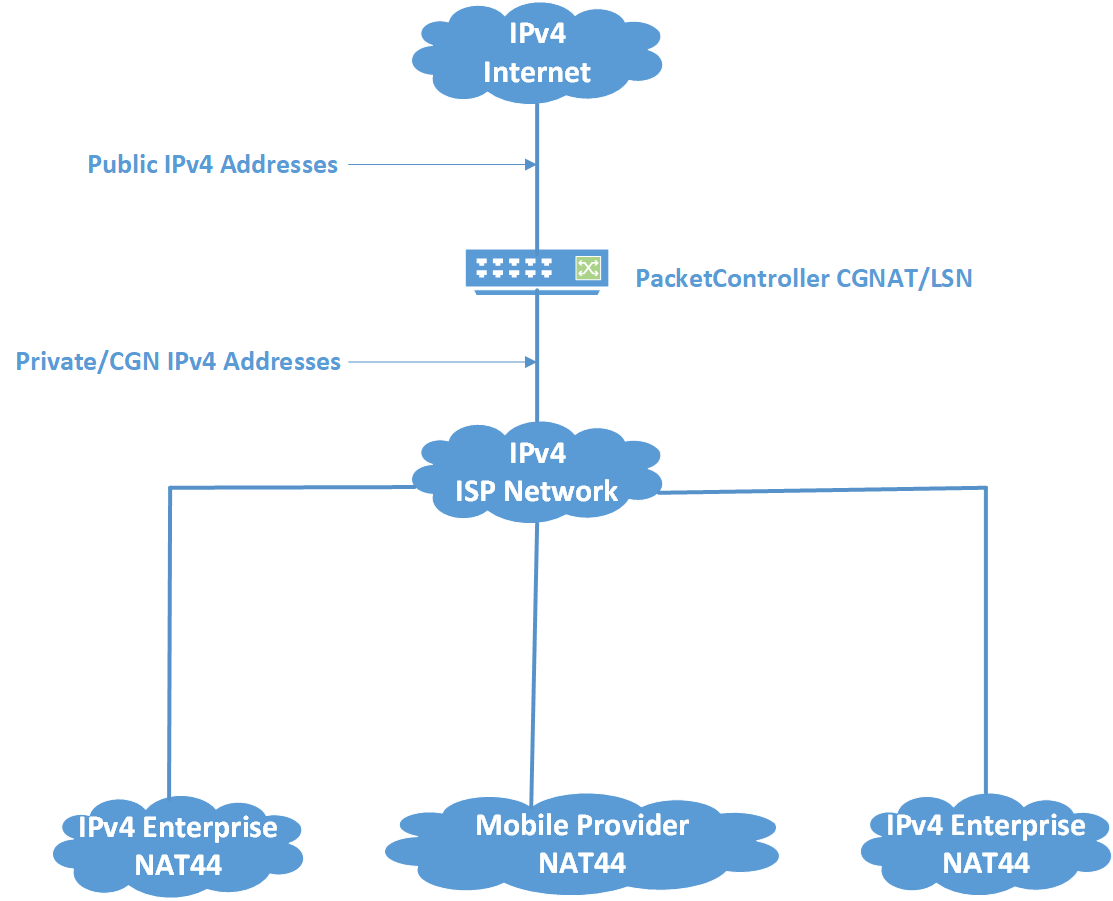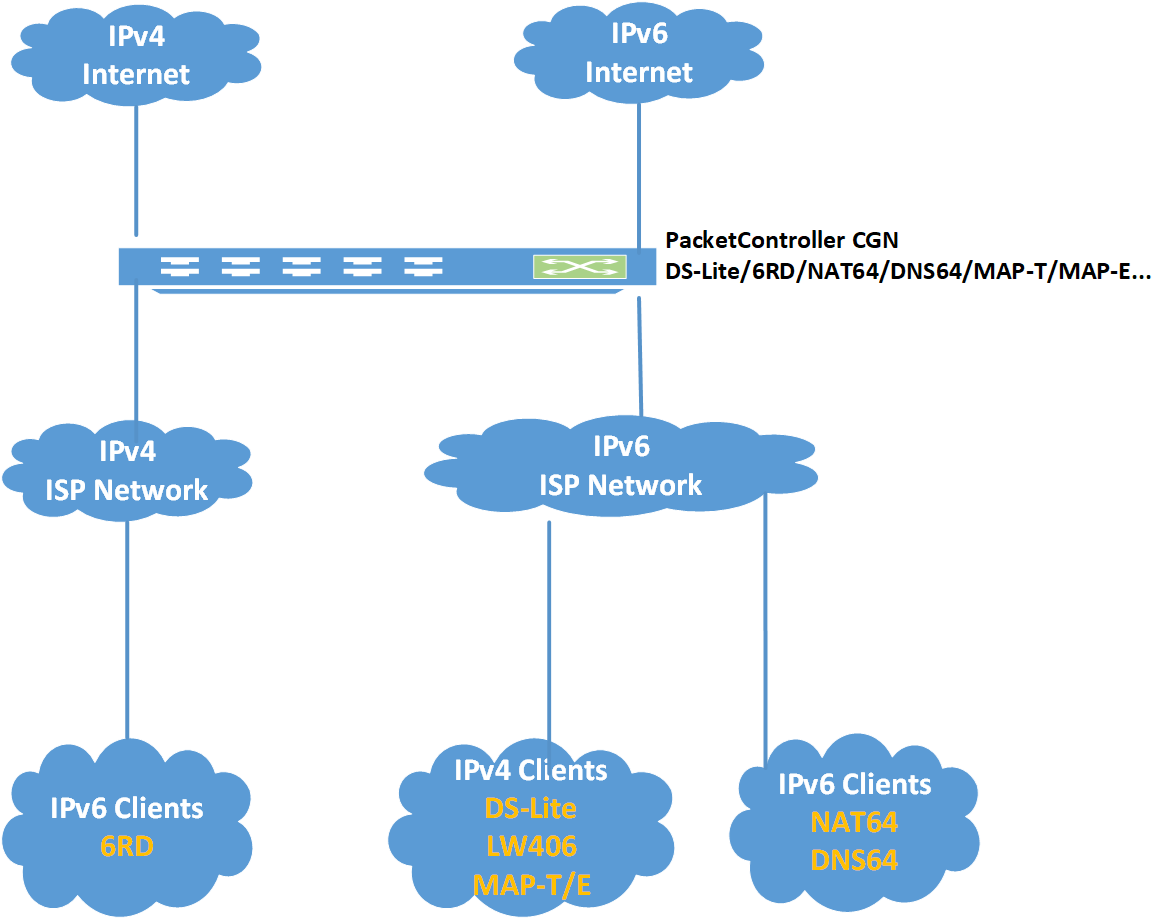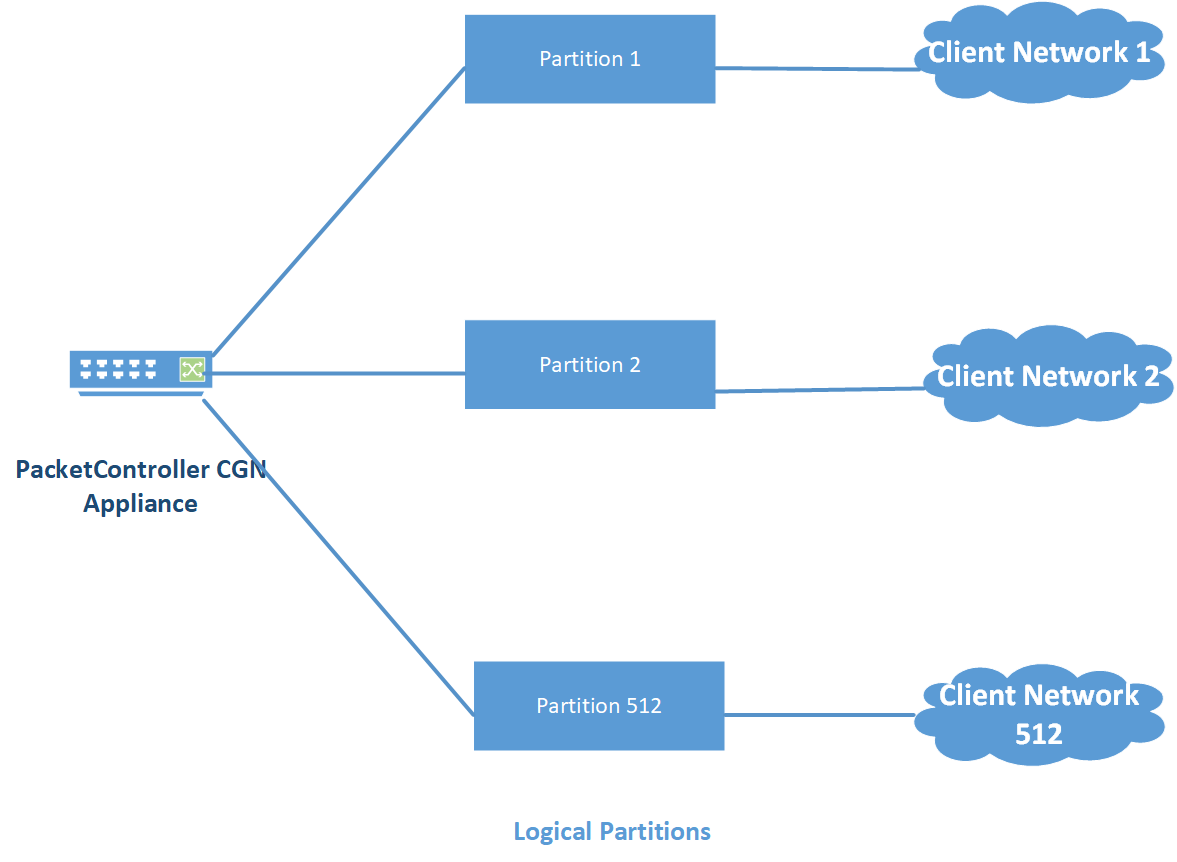Manage IPv4 and IPv6 Addresses for Transparent Infrastructure Operation
PacketController Networks offers high performance Carrier-Grade NAT (CGNAT) solutions with protocol translation that enables service providers and enterprise to transparently support and interoperate IPv4 and IPv6 devices and content.
-
Problems
IPv4 is the dominant connection protocol on the Internet and the official IPv4s are already finished. The IANA (a worldwide organization that manages IPv4 addresses) has already exhausted its IPv4 pool, so only the RIRs (Regional Internet Registries) can allocate new IPv4s.
CGNAT, or Carrier-Grade Network Address Translation, is a method used by ISPs to allow multiple customers to share a single public IPv4 address. With IPv4 addresses running low, this is a practical solution to ensure everyone can access the internet.
This is achieved by translating private IP addresses within the ISP's network to a single public IP address that is visible to the internet. CGNAT is essential for managing the limited pool of available IPv4 addresses and helps ISPs accommodate the growing number of internet-connected devices. CGNAT operates at a large scale, handling the traffic of many users simultaneously. It is an evolution of the traditional Network Address Translation (NAT) used in home and small business networks. However, unlike traditional NAT, which operates at the level of individual routers, CGNAT functions at the ISP level, affecting all users within its network.
-
Solutions
PacketController CGN solution is based on standards-based mechanism - carrier-grade network address translation (CGNAT), large-scale NAT (LSN), NAT444 or NAT44 - to reclaim existing IPv4 space.

Our advanced CGNAT solution delivers reliable performance and security through key features:
1.Large-scale NAT (LSN), NAT444 or NAT44 let service providers exponentially scale available source addresses, up to a 35-to-1 return on a large-scale NAT (LSN) pool resource.
2.A wide range of functionality includes NAT 44, NAT 64, Deterministic NAT, Fixed NAT and DNS 64.
3.Providing NAT44(4) and ALGs to support network growth and a seamless user experience.
-
Benefits
1.Predictable Connectivity: Features like Endpoint Independent Mapping (EIM), Endpoint Independent Filtering (EIF), and hairpinning provide transparent and consistent NAT behavior for end-users.
2.Fair Resource Allocation: User quotas ensure public IP port usage is distributed equitably among all users.
3.Enhanced Security: Quotas protect the network by preventing a single user or malware infection from exhausting critical resources for everyone else.
-
Problems
A key challenge for ISPs is integrating a growing number of IPv6-capable devices with existing IPv4 infrastructure. Since both types of devices need to connect to content on either protocol, the two environments must be designed to interoperate for the foreseeable future, all while supporting other technology transitions.
-
Solutions
PacketController CGN solution provides comprehensive transition technologies help bridge the gap between IPv4 and IPv6 networks.

Our advanced CGNAT solution delivers full IPv4/IPv6 connectivity, regardless of source or destination IP protocol:
1.DS-Lite and Lw4o6: Let IPv4 devices connect to the internet by tunneling their traffic through an IPv6 network.
2.6RD: Does the opposite, enabling IPv6 connectivity over an IPv4 network.
3.MAP-T: Translates packets between IPv4 and IPv6 directly using a stateless NAT method, eliminating the need for tunnels.
4.464XLAT: Facilitates IPv4 connectivity over IPv6 networks.
5.NAT64/DNS64: Enables IPv6-only clients to communicate with IPv4 services.
-
Benefits
Our advanced CGNAT solution supports comprehensive IPv6 transition technologies, allowing businesses to adopt IPv6 without disrupting existing IPv4-based services.
-
Multiple CGN instances on a single appliance
A PacketController CGN appliance can be partitioned into logical entities called partitions. Each partition can be configured and used as a separate PacketController CGN appliance.
Each instance runs independently and is totally isolated to support the creation, testing and optimization of services without impacting other tenant applications.
Depending on PacketController CGN appliance models, up to 512 partitions on one appliance are supported.

-
Hardware Appliance
All PacketController Hardware Appliances support N+M active-standby/active-active clustering deployment.Appliance Model Network Available Licenses Supported Ports Platform C100 10G Network 5/10/15 Gbps 1GbE Copper/Fiber | 10GbE Fiber (SFP+) Platform C200 40G Network 20/40/60 Gbps 1GbE Copper/Fiber | 10GbE Fiber (SFP+)
25GbE Fiber (SFP28) | 40GbE Fiber (QSFP+) | 100GbE Fiber (QSFP+)Platform C300 100G Network 100/200/240/320 Gbps 10GbE Fiber (SFP+) | 25GbE Fiber (SFP28)
40GbE Fiber (QSFP+) | 100GbE Fiber (QSFP+)Platform C400 400G Network 400/520 Gbps 10GbE Fiber (SFP+) | 25GbE Fiber (SFP28)
40GbE Fiber (QSFP+) | 100GbE Fiber (QSFP+)
400GbE (QSFP-DD)
How would you like to get started?
-
Download Datasheet
Get the detailed information you need on PacketController CGN products. Datasheets include features, specifications, and more.
-
Schedule a Demo
Join a PacketController engineer to gain an in-depth understanding about features and see how our CGN solutions can be used to meet your objectives.
-
Get Quote
Which CGN hardware platform is right for you? Receive a custom quote based on your unique Carrier-Grade NAT (CGNAT) and IPv6 migration needs.